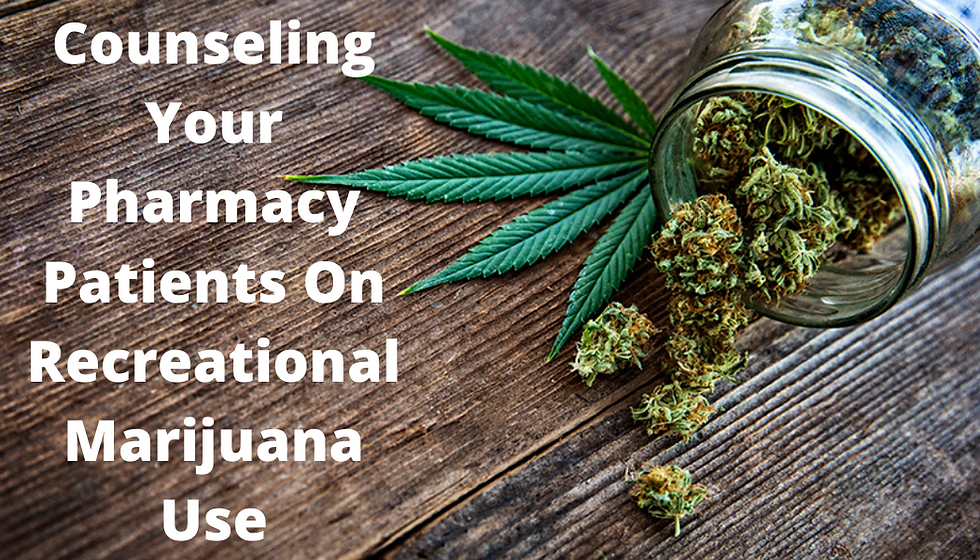Recreational Marijuana Use Is Growing
- United Pharmacy Network Team
- Apr 28, 2022
- 2 min read

As recreational marijuana becomes legal in more and more states, as a pharmacist, you can be sure some of your patients are using it in one form or another. All marijuana formulations have documented drug and food interactions; however because federal regulation has long criminalized any use of marijuana, there are few large randomized controlled trials, and no standards for purity or composition.
Providing optimal patient care for patients using medical cannabis goes beyond listing patients as “marijuana users” on their patient profiles. “We need to open the door for communication about these products with our patients,” said Kam Capoccia, PharmD, BCPS, CDCES, Clinical Professor of Community Care, Western New England University College of Pharmacy and Health Sciences. “Whenever we take a history, we include medical and recreational marijuana along with tobacco, medications, and health history. If you ask, you will learn.”
A 2021 Gallup Poll found that 49% of respondents have tried marijuana, up from 45% in 2017 and 2019. Gallup reported that 1 in 7 Americans use CBD products, primarily for pain (40%), anxiety (20%), sleep (11%), and arthritis (8%).
Smoking is the most common formulation for young adults, but age is no barrier: In 2020, 53% of patients surveyed at a University of California, San Diego Seniors Clinic said they use cannabis regularly. Forty-six percent use CBD-only products for pain/arthritis (73%), sleep disturbance (29%), anxiety (24%, and depression (17%).
“Everyone is using marijuana, you just have to ask to find out,” said Capoccia, “and use is growing. Among older patients at UCSD, more than half said they tried it for the first time after the age of 50.”
A growing number of states have legalized some form of marijuana, either medical or recreational—or both. Each state has its own rules and regulations on growing, processing, selling, and using marijuana in its different forms. “As a pharmacist, it is important to know the rules for you and your patients in your own state,” Capoccia said. Pharmacists should educate themselves on the existing data regarding medical use of cannabis and feel comfortable with performing a drug utilization review for medical cannabis just as they would for any medication,
As the medication experts, pharmacists should be ready to provide appropriate patient education and apply evidence-based knowledge when educating the public on what is safe, what is unsafe, along with potential drug interactions. Pharmacists should also research and, if called upon, provide education on cannabis products with consistent quality standards.
“Research is expanding,” Capoccia said. “The evidence is not solid and there are no standards, a very uncomfortable space for pharmacists, but CBD demonstrates some benefits. We should be counseling on product selection, safety, efficacy, evidence, and interactions. I advise people to start low, go slow, and to use a journal to track their own dosing and effects. We don’t have any other guidance for now but continuing pharmacy education and improving pharmacy curricula on cannabis products will ultimately improve this pharmacist-patient relationship. Patients trust pharmacists, and it is our responsibility to learn so that we can best take care of patients. One thing is for sure: the future is an exciting place to be a pharmacist.
Sources: National Library of Medicine and Pharmacy Times





Comments